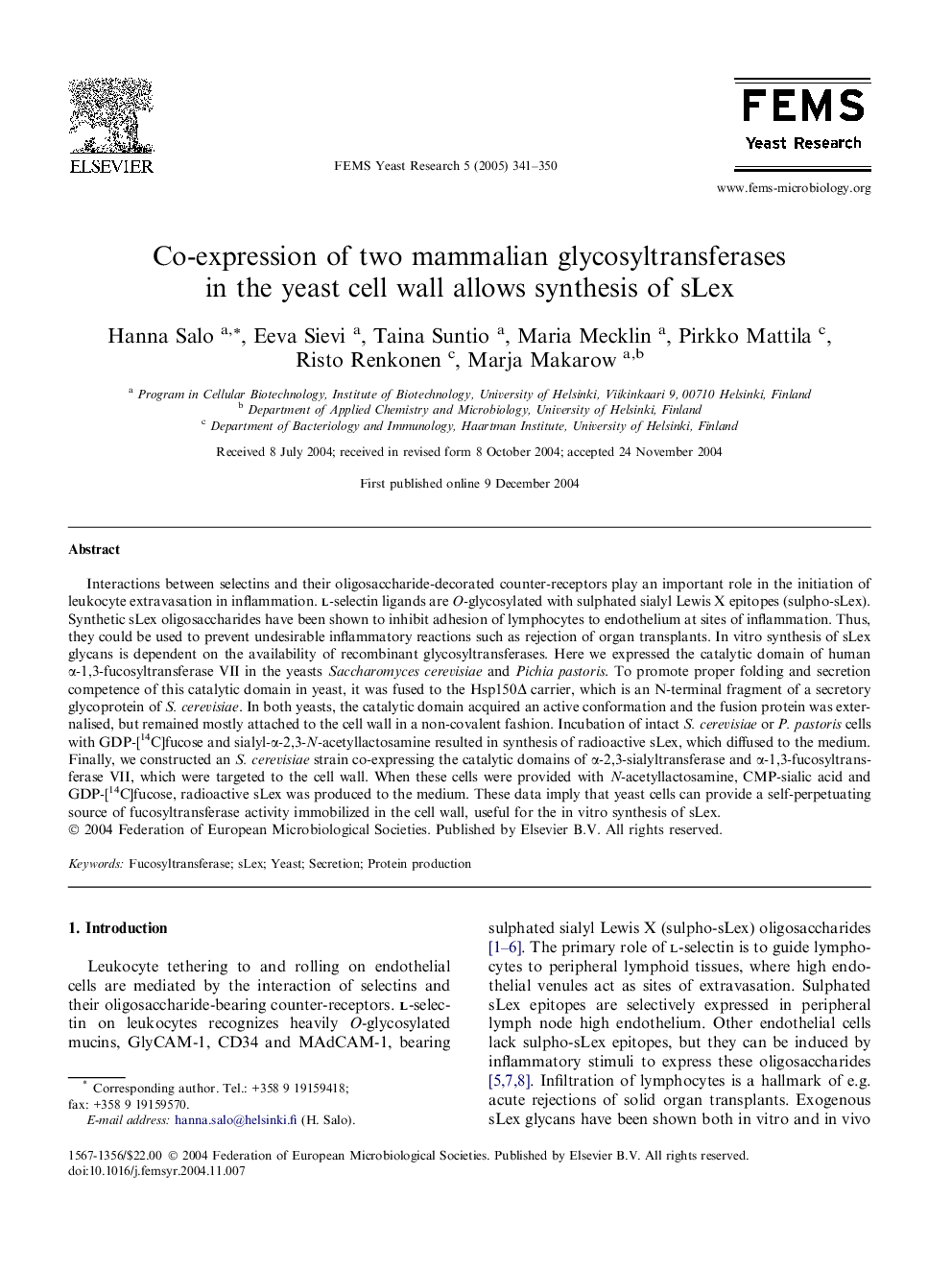| کد مقاله | کد نشریه | سال انتشار | مقاله انگلیسی | نسخه تمام متن |
|---|---|---|---|---|
| 9278996 | 1593166 | 2005 | 10 صفحه PDF | دانلود رایگان |
عنوان انگلیسی مقاله ISI
Co-expression of two mammalian glycosyltransferases in the yeast cell wall allows synthesis of sLex
دانلود مقاله + سفارش ترجمه
دانلود مقاله ISI انگلیسی
رایگان برای ایرانیان
کلمات کلیدی
موضوعات مرتبط
علوم زیستی و بیوفناوری
ایمنی شناسی و میکروب شناسی
میکروبیولوژی و بیوتکنولوژی کاربردی
پیش نمایش صفحه اول مقاله

چکیده انگلیسی
Interactions between selectins and their oligosaccharide-decorated counter-receptors play an important role in the initiation of leukocyte extravasation in inflammation. l-selectin ligands are O-glycosylated with sulphated sialyl Lewis X epitopes (sulpho-sLex). Synthetic sLex oligosaccharides have been shown to inhibit adhesion of lymphocytes to endothelium at sites of inflammation. Thus, they could be used to prevent undesirable inflammatory reactions such as rejection of organ transplants. In vitro synthesis of sLex glycans is dependent on the availability of recombinant glycosyltransferases. Here we expressed the catalytic domain of human α-1,3-fucosyltransferase VII in the yeasts Saccharomyces cerevisiae and Pichia pastoris. To promote proper folding and secretion competence of this catalytic domain in yeast, it was fused to the Hsp150Πcarrier, which is an N-terminal fragment of a secretory glycoprotein of S. cerevisiae. In both yeasts, the catalytic domain acquired an active conformation and the fusion protein was externalised, but remained mostly attached to the cell wall in a non-covalent fashion. Incubation of intact S. cerevisiae or P. pastoris cells with GDP-[14C]fucose and sialyl-α-2,3-N-acetyllactosamine resulted in synthesis of radioactive sLex, which diffused to the medium. Finally, we constructed an S. cerevisiae strain co-expressing the catalytic domains of α-2,3-sialyltransferase and α-1,3-fucosyltransferase VII, which were targeted to the cell wall. When these cells were provided with N-acetyllactosamine, CMP-sialic acid and GDP-[14C]fucose, radioactive sLex was produced to the medium. These data imply that yeast cells can provide a self-perpetuating source of fucosyltransferase activity immobilized in the cell wall, useful for the in vitro synthesis of sLex.
ناشر
Database: Elsevier - ScienceDirect (ساینس دایرکت)
Journal: FEMS Yeast Research - Volume 5, Issues 4â5, February 2005, Pages 341-350
Journal: FEMS Yeast Research - Volume 5, Issues 4â5, February 2005, Pages 341-350
نویسندگان
Hanna Salo, Eeva Sievi, Taina Suntio, Maria Mecklin, Pirkko Mattila, Risto Renkonen, Marja Makarow,